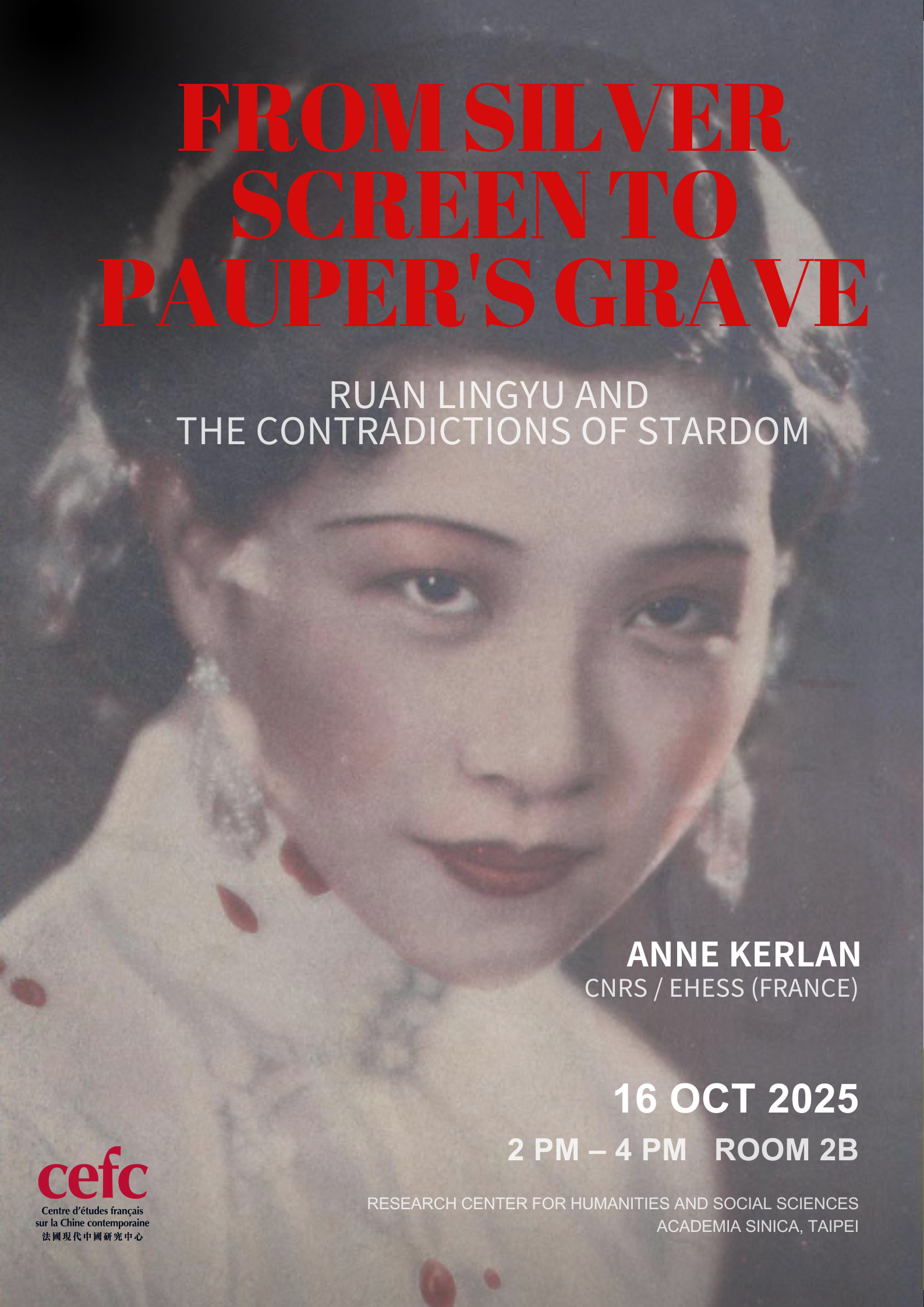Abstract:
On March 14, 1935, the film actress Ruan Lingyu (阮玲玉), affiliated with the Lianhua (聯華) film studio and who had taken her own life six days earlier, was laid to rest in Shanghai. The crowds that gathered on that day were immense: estimates range up to 100,000 individuals. While this figure is or not exaggerated, it nevertheless reflects the magnitude of the event.
However, given the significance and grandeur of Ruan Lingyu’s funeral, the route taken by the procession was unexpectedly modest. The starting point was the International Funeral Directors (萬國殯儀館), but then the cortege headed northward, leaving the the International Concession and ultimately leading to the Lianyi Cemetery(聯義山莊), a private cemetery affiliated with a Cantonese-based benevolent association.
This itinerary and the final resting place raises looks like a symbolic “casting away” of Ruan Lingyu from the Shanghai of the elites. It prompts reflection on the actress’s social status and the ambiguities surrounding her place in Shanghai society. Popular she certainly was. A star? These funerals would seem to confirm it. But what kind of social status was actually conferred by such celebrity? What did it mean to be a star in mid-1930s Shanghai?
This conference will explore the construction, crisis, and posthumous reframing of Chinese film star Ruan Lingyu’s public image during the 1930s, in Republican-era Shanghai. It investigates how Ruan’s “picture personality” was crafted by Lianhua Film Company to embody ideals of moral virtue, professionalism, and feminine sacrifice—while carefully distancing her from the scandal-prone connotations of female celebrity. The tensions between this “picture personality” and the private life of the actress, marked by a turbulent relationship and mounting press scrutiny, will be examined. We aim to argue that Ruan, as a star, occupied the precarious space of the “powerless elite”—highly visible yet socially marginal, celebrated yet morally policed.
Speaker: Anne Kerlan, Director of Research at the CNRS and teaches at EHESS, specializing in twentieth-century Chinese cultural history and cinema.
Anne Kerlan is Director of Research at the CNRS (Centre National de la recherche scientifique-French National Centre for Scientific Research) since 2001, at the The Center for studies on China, Korea and Japan (CNRS; École des Hautes Études en Sciences Sociales-the School of Advanced Studies in the Social Sciences; Université de Paris), where she teaches for master and PhDs students. She is a historian of twentieth-century China, specialized on cultural history of cinema (mostly Republican period), as well has on the history of artists and intellectuals’ lifes. She is also co-manager of a book collection on cinema from non-western world (Editions Mimésis, “Cinéma en Champ-Contrechamp”).
Publications:
Her recents publications include the two books : Lin Zhao: Combattante de la liberté (Fayard, 2018; two Prizes in 2019) ; Hollywood in Shanghai. L’épopée des studios de la Lianhua, 1930-1948 (PUR, 2015) and many articles (see https://cv.hal.science/anne-kerlan).
This seminar will be held in English.
Corrado Neri, Director of the CEFC Taipei, will chair the session.


